#himinglæva
Text
Here is a goddess based on two figures from Russian mythology and a being from Norse mythology!
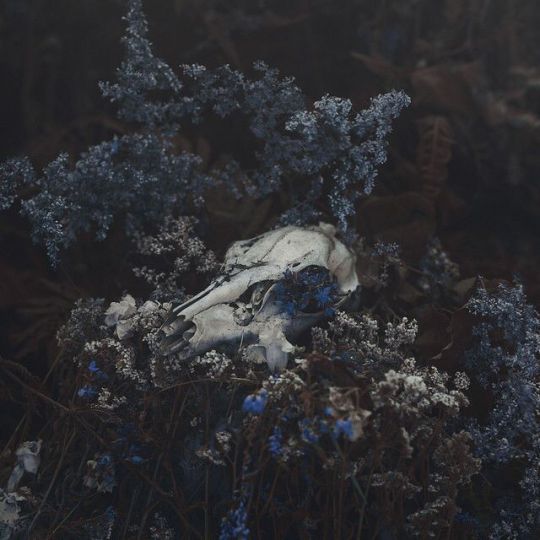
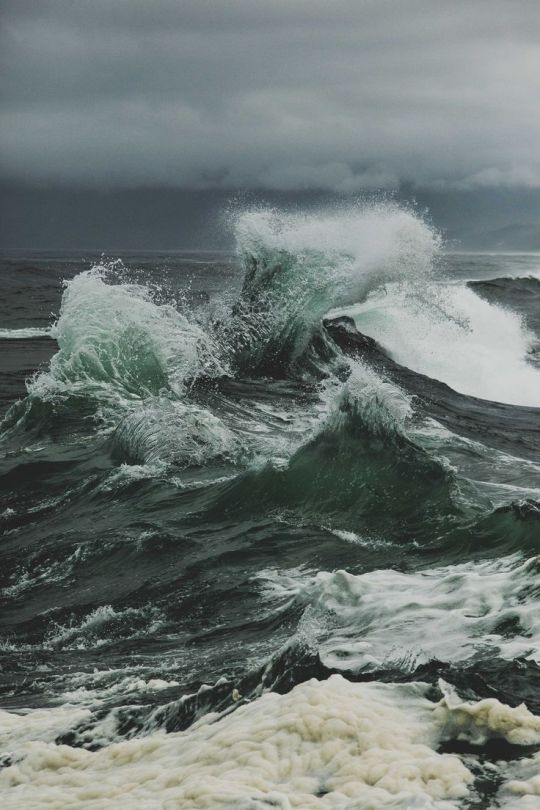

Leshazurnovik Sviatogur Himonglevatus D’Nexomuwilga is a fairly enigmatic goddess who can be quite unpredictable and volatile. She has complex moral ambiguity, both acting as beneficial and hazardous with generally reasonable deeds. She only aids people who treat her with genuine respect and humility, while providing them protection and proper sustenance. She often tests the moral character of those who encounter her by handing out tasks, asking tricky questions, and making them play a rigged game of cards. She’s quite knowledgeable and wise, but does have an inclination to misguide travellers, shepherds, and children. Despite her seriousness and potential ferocity, she’s secretly festive and fun-loving. Leshazurnovik can be terribly mischievous, aggressively stubborn, and callously sadistic, but it depends on how her day is going.
Her door-sized rectangular figure is slightly overweight with a flattened, jutting rib-like structure, hooked nose, and warts. She also has bushy eyebrows, sagging breasts, a prominent vulva, metal teeth, a swollen belly, and slim arms. Leshazurnovik is an elderly woman with curved horns, cloven feet, and an extensive beard of translucent blue waves with lichen and white foam. Her luxuriant grey hair has long curly strands and it’s adorned with mushrooms, autumnal leaves, and moss. Besides her sturdy chicken feet, she has a large dragon tail with cobweb-covered spring leaves fur and shimmering killarney green scales. Her rough skin is unnaturally pale and she has perpetually unblinking, yet dazzling lead-blue eyes with red and green tapetum lucidum. Her eyelashes are red, her left eye is larger than the other, and her right ear is half eaten. She dons a bone white blouse and a bossanova sarafan with tamarillo embroidered ribbons of pink and dark red-purple cabbage roses with fern green leaves. She has a purplish-black skirt and a headscarf made from a random assortment of carnivore skins. Leshazurnovik also wears a necklace of worn rope and baby human skulls and a comfy cloak of black wool.
She’s able to grow as tall as the highest treetops and as small as a single blade of grass. Leshazurnovik can audibly mimic the sounds of untamable beasts, familiar voices that travellers, shepherds, and children know, and the melodies of swaying trees. When flying on her giant mortar, her aura can generate tempests, earthquakes, and devastating waves. She can devour newly released souls and absorb the memories, emotions, knowledge, physical and mental pain, and vital fluids of living creatures. Leshazurnovik has surprising authority over dawn, noon, night, black magic, and forests, and she can shapeshift into all flora and fauna. She’s capable of bestowing people immortality and keeping magical items in her hut’s invisible basement that she only has access to. She doesn’t cast a shadow, and she’s able to utilise wooded areas, marshes, pyres, carnivores, phoenix feathers, and boiling cauldrons to teleport.
Her supreme knowledge is only limited to magic, the occult, natural disasters, ecosystems, physical and mental maturity, hunting, cooking, and death. She can summon wild boars, crocodiles, wolves, bears, goats, horses, chickens, owls, frogs, magpies, and spirits. She has the ability to obstruct paths with fallen trees, bodies of water, and animal carcasses, and conceal missing persons. She makes their presence known through distant sounds, yet making them remain elusive and impossible to locate. Leshazurnovik has strength, durability, speed, senses, and a bite that are all nearly transcendent. She uses pieces of birch tree and cow pelts to foretell disasters, and her pacts involve not killing crows, damaging trees, witnessing newborn things, and disturbing the hedges. When pacts with her are broken, it leads to the demise of livestock and/or the families of those who made a deal with her.
FAMILY:
Mulevhoka Rusvelochka (adoptive daughter)
ALIASES/NICKNAMES:
Baba Yaga
Leshy
Himinglæva
Bony leg
Old Lady of the Forest
She With Teeth of Iron
FUN FACTS/EXTRA INFORMATION:
She’s an avatar of J’Tervaschin and Charuzlonje
Her domain is a never-ending dense boreal, coniferous, and deciduous forest with a fountain of youth and a dwelling that lies deep in the centre. This dwelling is a rickety wooden hut that’s perched atop of four gigantic chicken legs and it continuously spins around, stopping at nighttime. It’s surrounded by a fence made of skulls and bones from unfortunate travellers. In this domain, there are also old dried trees, a fiery river, and a prominence of phoenixes.
She usually flies around in a human-sized mortar, wielding a big enough pestle in her left hand.
She’s often accompanied by a black goat, two wolves, three hens, five wild boars, five crocodiles, and a small army of child spirits.
As an Æylphitus, the different parts of her name have special meanings: Leshazurnovik means “she of the deciduous forest”, Sviatogur means “sacred mountain”, Himonglevatus means “transparent wave or heaven-shining one”, and D’Nexomuwilga means “field of contentment, corpse-rushes or no working”.
She sits with her left leg crossing over the right
An iron kettle, cauldron, and broomstick are her sacred symbols.
#writerscorner#writing#creative writing#original character#personality#physical appearance#outfit#abilities#power#deity#goddess#russian mythology#leshy#baba yaga#norse mythology#himinglæva#forest#death#magic#fun facts#extra information
4 notes
·
View notes
Note
What about Heimdall? He was born of 9 mothers, so he wasn't woMAN born, but woMEN born.
Heimdall is... complicated. People have tried to bring up "womEn" vs "womAn" before in the context of the parents being lesbians, but that has always just felt like such a lame explanation to me. For our purposes, if the character was born of at least one woman, then they don't count for the Birth Parent Clause.
At the same time, however, being born of 9 different women is certainly... esoteric. Unfortunately, we don't have any clear answers as to the logistics of how this was meant to have worked, and it's apparently a topic of heavy debate among historians and scholars; it always just said (paraphrased) "Heimdall was the son of Odin and nine sisters."
One popular (though not necessarily accurate) theory is that the nine mothers were the Nine Daughters of Ægir and Rán, who were personifications of ocean waves. This would imply that Heimdall was 'born of the sea,' perhaps in a similar manner to Aphrodite. However, this theory starts to hold a lot less water (hehe) when you take the names of these women into account. Völuspá hin skamma, an Old Norse poem, listed out the names of Heimdall's 9 mothers as Angeyja, Atla, Eistla, Eyrgjafa, Gjálp, Greip, Imð(r), Járnsaxa, and Ulfrún, and these have reportedly appeared in a variety of other sources that slightly strengthen the validity of this list. The Nine Daughters of Ægir and Rán, however, have a completely different list of names which are listed multiple times in the Prose Edda: Blóðughadda, Bylgja, Dröfn/Bára, Dúfa, He(f/v)ring, Himinglæva, Hrönn, Kólga, and Uðr/Unn. Again, two very different lists of names.
On top of all of that is the whole idea that when these Norse myths say there are "nine" of something, that it's not necessarily exactly 9, but just "a bunch." Like how sometimes we would say "a dozen" even if what we're talking about doesn't necessarily come in 12. So we don't even know if it's specifically 9 mothers.
All of this is to say, uh. Shit's fucked, bro? I don't think this'll ever get a real answer unfortunately so white boy is just gonna stay uncategorized I guess
Heimdall was also submitted by @an-actual-literal-egg. Thank you both for your submissions!
#asks#debatable character#heimdall#norse mythology#hes sometimes called “The Whitest God” which i find hilarious. in case you were wondering why i just called him white boy
118 notes
·
View notes
Text
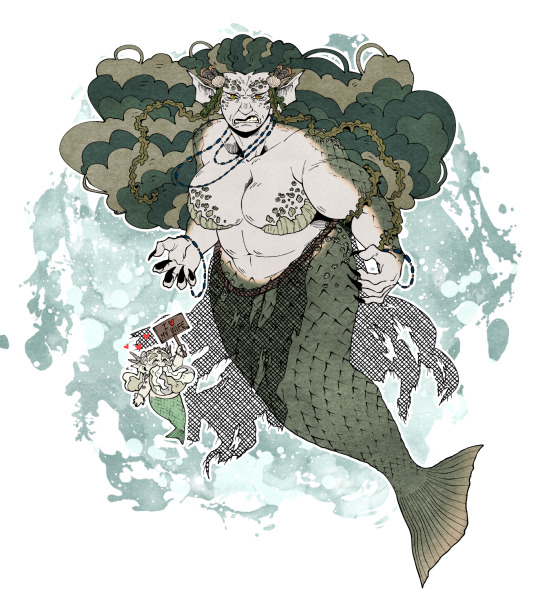
Here is my addition to Mermay! The rulers of the seas, Rån(Rán) and her husband Æge(Ægir). They are both jotuns but I based their design on the Vetter(a collective term for all magical creatures from Scandinavian folklore)Marmennil(Æge) and Margygr(Rån).
Marmennil(Mar = Sea, Mennil = Old man) looks like tiny mermen but they either have the face of an old man(some telling they have the face of a child). They are benevolent and will reward fishers for their kindness. (Like giving them pieces of clothing like a sock, glove, or a hat. They get cold lol) They can see into the future, warn fishers of incoming disasters, and show them good fishing spots.
Æge is a pretty chill fellow. He is mostly known for throwing parties for the Norse gods.
Margygr(Mar = Sea, Gygr = female term for a jotun/troll) is the murderhobo of the sea, and their favorite hobby is drowning young seafarers. They are a bad omen and usually show up before a terrible storm. If they throw a fish in the seafarer's boat it means there will be many casualties or a shipwreck. If she eats the fish there might still be hope for the men.
Rån is the complete opposite of Æge, she views humans as trespassers and uses her net to trap and drown seafarers with the help of her and Æge's nine daughters. Himinglæva, Duva, Blodughadda, Herving, Unn, Ronn, Bylga, Båra and Kolga.(Their names all mean "Wave" lol. They are also all the mothers of Heimdall.)
#fantasy #folklore #troll #characterdesign #faefolk #gygr #mermay #norsemythology #rån #æge #marmennill #margygr #sjøgyger #marmel #skandinavia
#my art#fantasy#folklore#troll#character design#fae folk#gygr#marmay#norse mythology#rån#æge#marmennill#margygr#sjøgyger#marmel#skandinavien
29 notes
·
View notes
Text
Assault Lily: New Chapter — "At the Seeds' Frontier" | "When the Bugle Blooms"
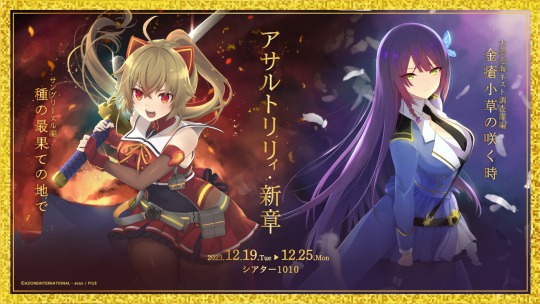
This upcoming stage play in December is Assault Lily's first double feature.
The official website (in Japanese of course) is here.
"When the Bugle Blooms" — Oshima Offshore Nest Investigation Team chapter
TL Note: Bugles are a kind of flower, sometimes considered a weed. This specific species, Ajuga decumbens ("kiransou" in Japanese), is not well known outside Asia.
After four Huge Nests suddenly appear near the island of Izu Oshima, the Gardens of Tokyo decide to secretly assemble an "Oshima Offshore Nest Investigation Team" to simultaneously destroy the Nests and investigate a closed GEHENA research facility on Oshima, which they suspect relates to the recent sightings of abnormal Huge in the Tokyo area.
Cast and Character List
Team Hitotsuyanagi, Yurigaoka Girls' Academy
Izawa Mikako as "Yurigaoka's Beau Idéal" Kaede Johan Nouvel
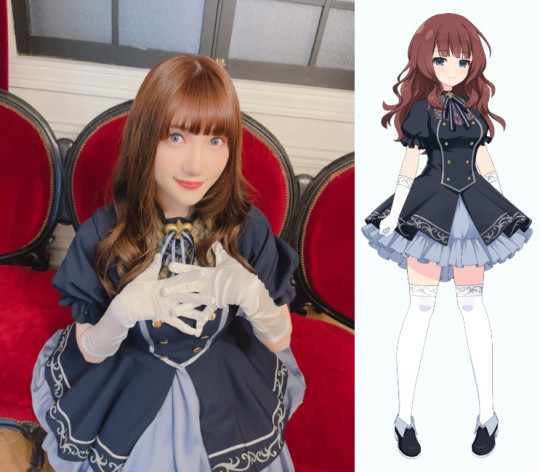
Nishimoto Rimi as "Yurigaoka Lily Newspaper Chief" Futagawa Fumi
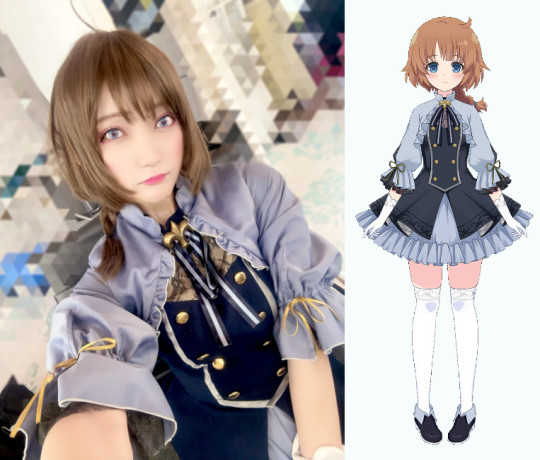
Legion Hronesnæsse, Odaiba Girls' School
Ishii Haruna as "Priestess of the Trance" Funada Kiito

Saiba Mizuki as "The White Witch of Odaiba" Funada Ui
Saiba Mizuki hasn't posted a visual yet; this is an old one from TSA.

Nomoto Sora as "The Lady-Tengu of Kurama" Shiba Tomoshibi
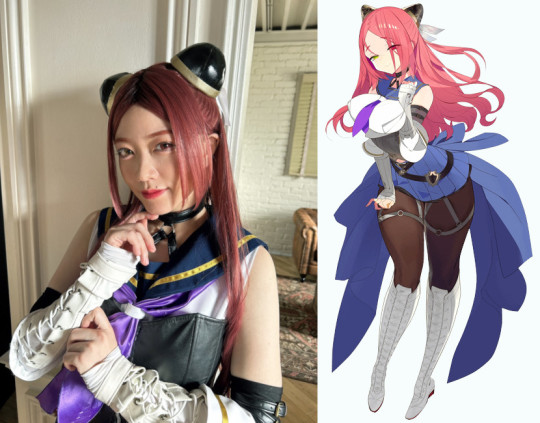
Legion Ironside, Ludvico Private Girls' Academy
Nakamura Yukari as "La Pucelle" Fukuyama Jeanne Sachie
Nakamura Yukari hasn't posted a visual yet; this is an old one from the Ludvico plays.
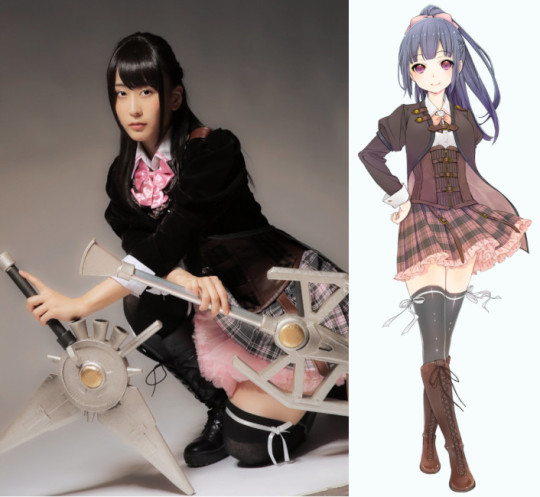
Nakagawa Rika as "The White Rose Princess" Kishimoto Lucia Raimu

Hoshimori Sana as "Knight of the White Rose" Amamiya Sophia Seren
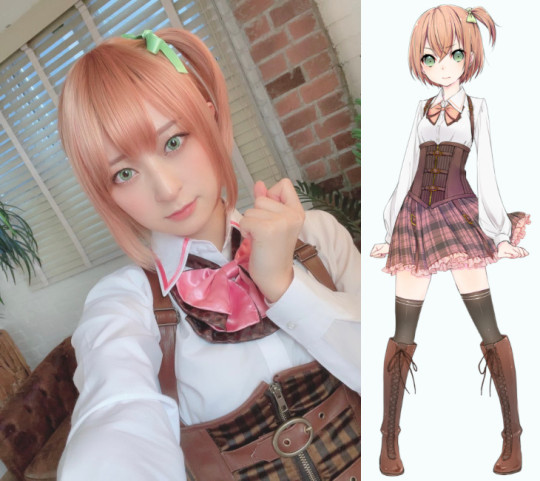
Legion Hakolberand, Irma Girls' High School for the Arts
Sasaki Yukari as "The Empress of Hakolberand" Kamigoori Marimo

Kitazawa Saki as "The Priestess of Irminsul" Ueda Imari
Kitazawa Saki hasn't posted a visual yet; this is an old one from TGoD.

Herensuge Girls' Academy
Fujii Ayaka as Aizawa Kazuha (Legion Hervor)
Fujii Ayaka hasn't posted a visual yet; this is an old one from LoG. Also, yes, Kazuha is the only Lily without an epithet.

Tamegai Hana as "Xana" Matsumura Fuuka (Legion Cuélebre)

Ryuto Girls' Academy
Mutou Shiori as "The CHARM Meister" Amatsu Marei (Legion Himinglæva)

Instructor
Onose Mirai as "Professor" Nakagawa Mary Tomoyo
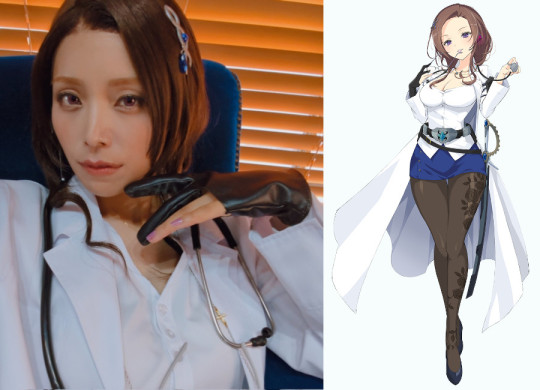
"At the Seeds' Frontier" — Legion Sanngriðr chapter
After four Huge Nests suddenly appear near the island of Izu Oshima, Yurigaoka decides to dispatch Legions Álfheimr and Sanngriðr on an emergency expedition to destroy the Nests and secure the Kamakura shoreline before they launch their expedition to recapture Koshu.
Cast and Character List
Legion Sanngriðr
Oomori Rio as "The Uncontrollable Lily" Kondo Misaka
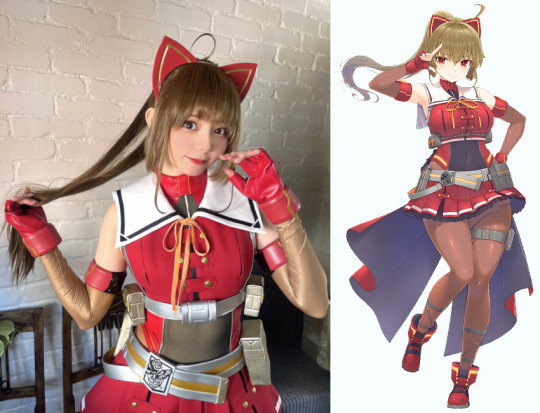
Makiura Itsuki as "Lys Noire" Hasebe Touka

Sonohara Arisa as "Golden Wolf" Luise Ingels

Shiraishi Mayumi as "Iocheaera" Murakami Tokiwa
Also notable for her role as Suzuki Chinami in the Odaiba plays.
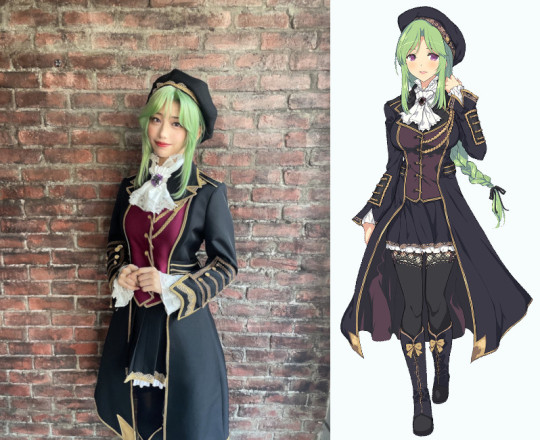
Hamaura Ayano as "Jungfrau" Kiko Totori
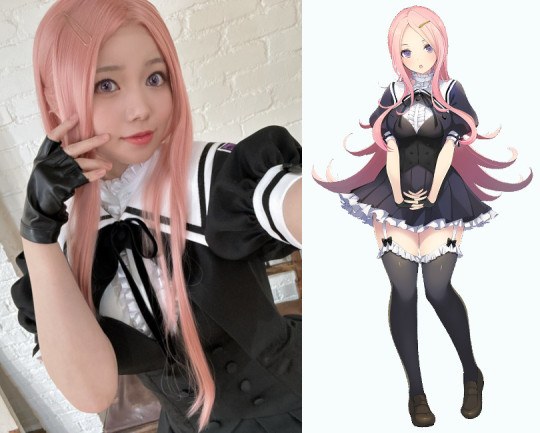
Hayashida Mahiro as "The Sword-Saint of Yurigaoka" Imagawa Homare
Also notable for her role as Hishida Haru in the Odaiba plays.

Itou Yui as "The Magician of Sanngriðr" Yamanashi Hibari

Hata Misaki as "The Wizard of Oz" Kurokawa Nady Hanna

Ootaki Saori as "Mad Dog" Seike Tomoyo
Also notable for her role as Matsunaga Brigitta Kayo in the Ludvico plays.
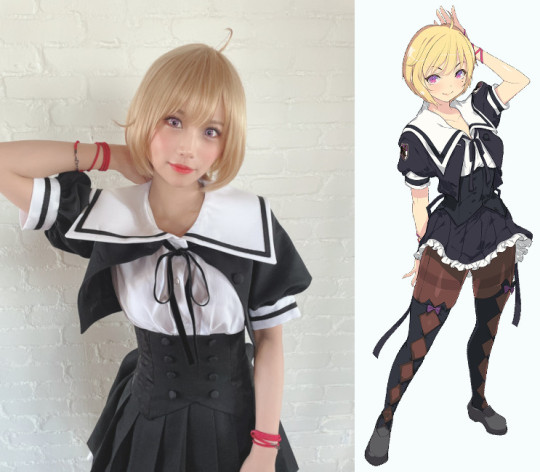
Ando Chikana as "Tempest" Imai Seira
Also notable for her role as Saigo Kurena in the Odaiba plays.
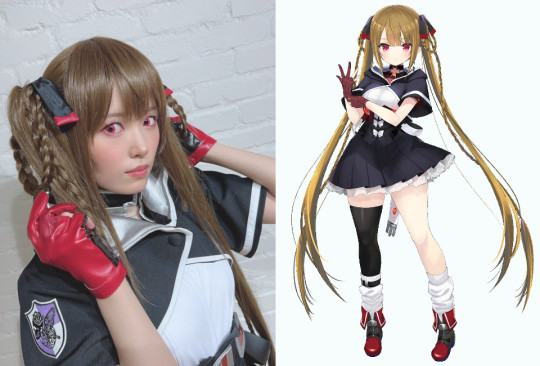
Flowers of the End
Hinaga Urara as Kinoe no Hana (The First Flower)
Also notable for her role as Imamura Yukari in the Odaiba plays.
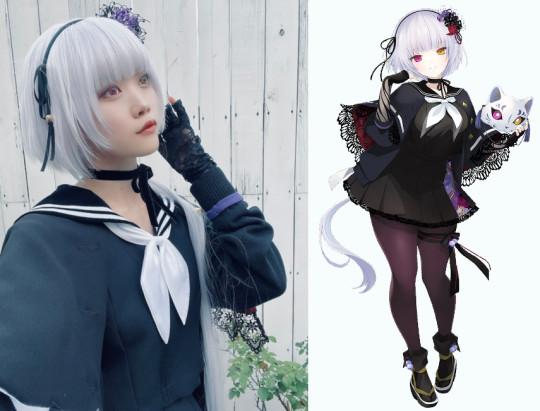
Tachibana Rii as Kinoto no Hana (The Second Flower)
Makihara Yui as Hinoe no Hana (The Third Flower)
Yazawa Rio as Hinoto no Hana (The Fourth Flower)
Sanada Uruha as Tsuchinoe no Hana (The Fifth Flower)
Udagawa Momoka as Tsuchinoto no Hana (The Sixth Flower)
Hoshino Sae as Kanoe no Hana (The Seventh Flower)
Inadama Honoka as Kanoto no Hana (The Eighth Flower)
Suzuki Rina as Mizunoe no Hana (The Ninth Flower)
We don't know what any of these characters look like. I can't be entirely sure that this is how their names are pronounced either.
Former Yurigaoka Girls' Academy Instructor
Fujioka Sayaka as Kojima Nadeshiko
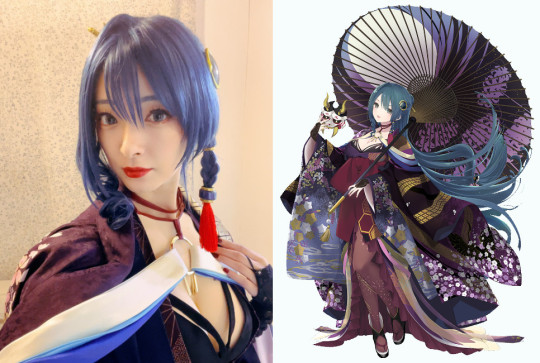
#assault lily#asslily#assault lily meta#assault lily stage plays#theater#stage plays#y'all I am SO hyped for this play#kaede johan nouvel#futagawa fumi#izawa mikako#nishimoto rimi
2 notes
·
View notes
Photo
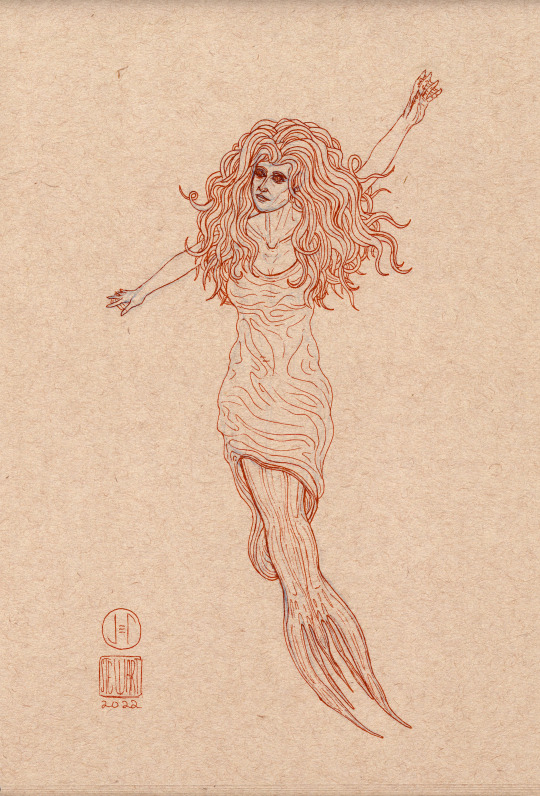
Norsery Rhymes, Northern Mythology from A to Z
Daughters of the Sea
Happy Thorsday in MerMay 2022 - V2!
Well here we are another Thor’s Day and another 20 min sketch of a Norse (and Germanic, sometimes Celtic) mythological characters. This week, since it’s in MerMay, I’m cheating a bit again, going back to the Mermaid Daughters of Aegir and Ran, the Norse gods of the Sea. One of the Nine Waves, the nine daughters of the sea, the Billow Maidens, Blóðughadda, Bylgja, Dröfn (Bara), Hefring (Hevring), Himinglæva, Hrönn, Kólga, Uðr (Unn).
0 notes
Note
Good timezone! Hope you're doing well!
A thought occurred to me recently, whilst walking along the coast. In Heathen circles, be it Nordic or Saxon based Heathenry, there is very little to no discussion or mentions of any lore about the sea, aside from maybe a passing reference to Njord, Ægir, Rán, or even Nerthus. I find it odd that there's little/no discussion regarding any lore surrounding the sea since the pre-Christian Heathens, especially those from Scandinavia, were a seafaring people. Even with the ship burials, including the one found at Sutton Hoo in the UK, the sea and seafaring surely had some significance to the old Heathens.
So, my question is: Is there any lore, be it Norse or Saxon, regarding the sea or wights/spirits/gods/jotun/etc associated with the sea and/or seafaring?
By which I mean, beyond the scope of the figures I've listed above (though more lore about the first three would be nice since they don't seem to feature heavily, that I recall, in the Eddas).
Thank you for you time!
Yeah, modern heathens are, on the balance, less seafaring than our predecessors (obviously that isn't always the case) so it probably doesn’t get brought up that much, but there’s quite a lot of lore around the sea. For one thing there’s the gods you named, there’s also Ægir’s bynames which might be semi-independent figures, Hlér and Gymir, and also the nine daughters of Ægir and Rán: Himinglæva ‘sky-bright/clear’; Dúfa ‘wave’; Blóðughadda ‘bloody-hair’; Hefring (unclear, maybe derived from haf ‘sea’ or related to a type of whale, höfrungur); Uðr/Unnr ‘wave’; Hrǫnn ‘wave’; Bylgja ‘wave’; Bára ‘wave’; and Kólga ‘cold’. Of course, Miðgarðsormr is to be found in the ocean, hence why Thor went fishing for him, and furthermore Thor himself has associations with the ocean and was called on for protection while seafaring for example by Helgi inn magri, and there is even a reference to the hammer Mjölnir coming from the sea, not in a saga or mythology but an actual runic amulet, so probably a more reliable witness to pagan beliefs than other types of evidence. In Eyrbyggja saga (chapter 54 in the edition I’m looking at) some men who drowned show up to their own funeral, perpetually sopping wet, and it’s said that it’s a sign that Rán has given them a good welcome if they are permitted to attend their funeral. There’s a massive abundance that I wouldn’t be able to summarize if I tried so I’ll let that be enough evidence that it’s there, and point out that there is a book, Heathenry and the Sea by Dan Coultas that although I’m loath to recommend a book that apparently contains a prayer asking the gods to help you serve the British Empire, probably contains a much more thorough answer to this question than what I’m going to be able to give you.
I’ll just add that since she is my specialty, Gefjun is not an ocean goddess despite what a shocking number of scholars (including H.R. Ellis Davidson) all doing some kind of weird academic round robin, citing each other to avoid taking responsibility for making the claim themselves, say. This hinges on Gefjun having a completely non-etymological, superficial similarity to the Old English geofon and Old Saxon geban (both ‘ocean’). The ocean does, however, play an important role in her myth of the formation of Zealand/Sjælland. Some including myself also suspect (based on etymology, and the name’s appearance in a list of legendary sea-kings, landless viking kings) that Gylfi was some kind of aquatic jötunn before he was euhemerized into a human king but there’s not much to be said about that.
116 notes
·
View notes
Text
The nine daughters of Ægir and Rán
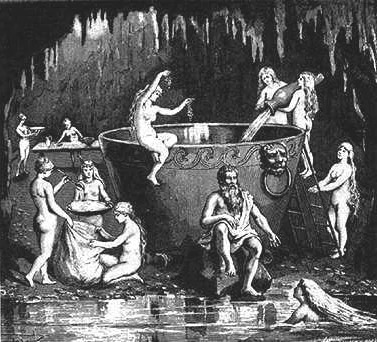
Bára (or Drǫfn). Dröfn means "foaming sea", whereas Bára translates to "wave."
Blóðughadda. Bloody hair. Rudolf Simek says that "the name does not appear to be too appropriate for a wave, but perhaps it was supposed to convey the wispy, thread-like appearance of the water streaming from the crest of the wave."
Bylgja. Billow.
Dúfa. Pitching wave.
Hefring. Rising/lifting wave.
Himinglæva. Transparent wave, or wave that is transparent on top.
Hrǫnn. Welling Wave.
Kólga. Cool Wave.
Unnr (or Uðr). Frothing Wave. Also appears in the Prose Edda as a name for Odin and as the name of a river.
35 notes
·
View notes
Photo
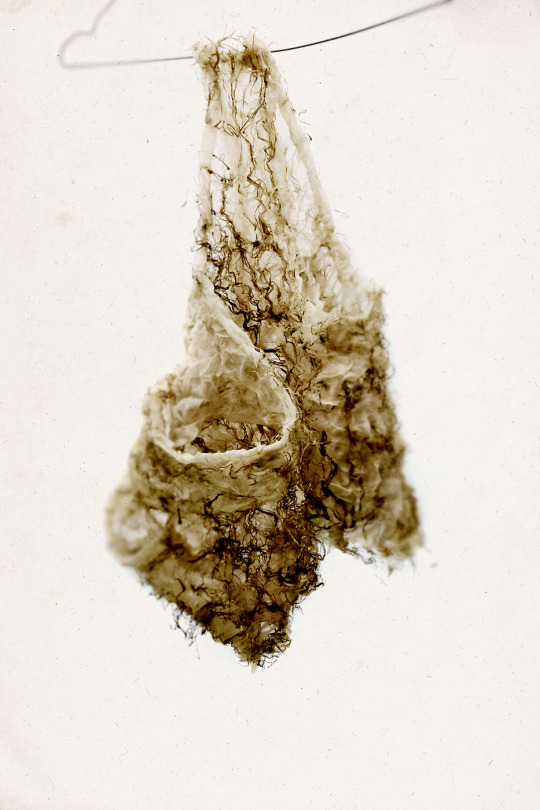
Nesselhemd
Der Grundschnitt des Nesselhemdes ist für einen Riesen oder eine Riesin angelegt.
Heimdall vielleicht - ihm/ihr wird die Brennessel zugeordnet. >
Auf die zugeschnittene Seide werden die rohen grob gekämmten Nesselfasern von ca 100 Nesselstängeln in Längsrichtung grob aufgenäht. Das Vorder- und Rückteil wird in enge Falten zusammengeschoben und handflächengroß eingebunden. >
Die beiden Stoffklumpen werden gekocht. Nach dem Trocknen werden sie auseinandergefaltet und mit der Hand zu einem kurzen Hemd zusammengenäht.
Es entsteht ein widerspenstiges und (außen) kratziges Faltengewebe, das dem schäumendes Meer ähnelt
Heimdall (vermutlich „der/die die Welt Beleuchtende“) wurde „am Rand der Erde“ von neun Meerfrauen - Meereswogen geboren, die in der nordischen Mythologie - im Buch Skáldskaparmál folgende Namen tragen:
“ Himinglæva - die, durch die man den Himmel klar sehen kann, Dúfa - die Hohe, Blóðughadda - die Bluthaarige, Hefring – die Steigende, Uðr – die Schäumende, Hrönn – die Fließende, Bylgja – die Wogende, Dröfn – die Schaumbefleckte, Kólga – die Kühlende.” >
website
14 notes
·
View notes
Text
I welcome and greet thee gods and giants of sea and open waters! On this tumultuous night of storm and rain I honor your awesome power and ask for favor, to cast your blessings unto me!
Ægir of the oceans sailed
Rán of the trench’s depths
Nerþuz of the river mouths
Njörðr of the open seas
And honor Nine Daughters:
Blóðughadda of the bleeding tides
Bylgja of the billowing waters
Ðröfn of the combing foam
Ðúfa of the pitching waves
Hefring of the lifting tides
Himinglæva of meniscus tops
Hrönn of the welling waters
Kólga of the frigid damp
Uðr of the froth
I welcome all the honored guests of oceans depths and seas! I ask for your blessings, for the favor of your waters, for cleansing rain and cooler summer nights, to wash away the dread of bygone days and cleanse me with the death of pasts now left behind!
Hail to the gods and giants, sons and daughters of the waves, bless me with your presence and grant me cleansing favor! Hail generous waters both of giving life and sailing it to Hel! Take my leavings into deepest depths and cleanse me with your waters to a future fresh renewed !
#devotional#prayers#heathenry#norse paganism#waters and warriors#foam and depths#sanction and sacrifice#wealth and wreckage#daughters of the depths
5 notes
·
View notes
Text
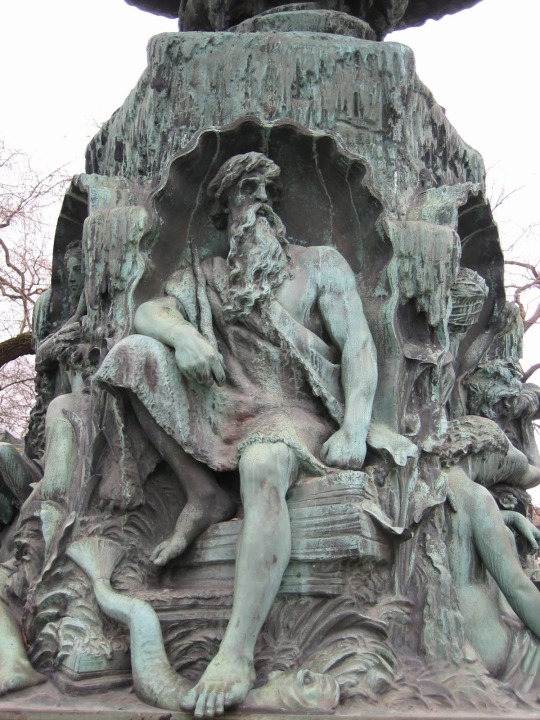
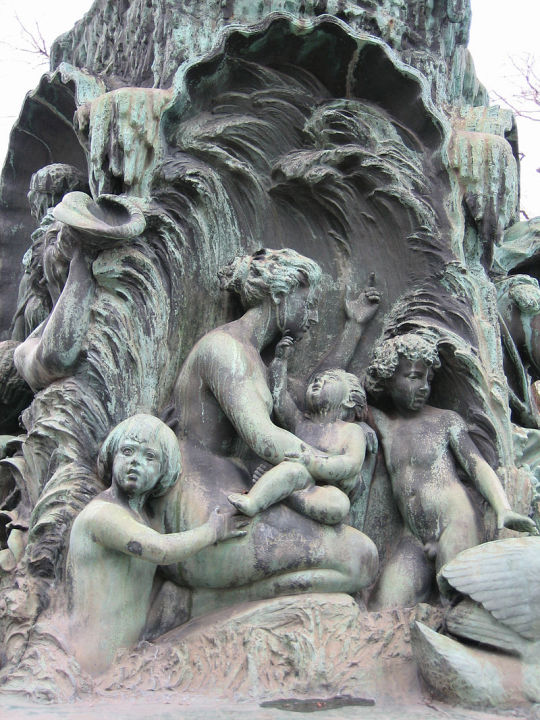
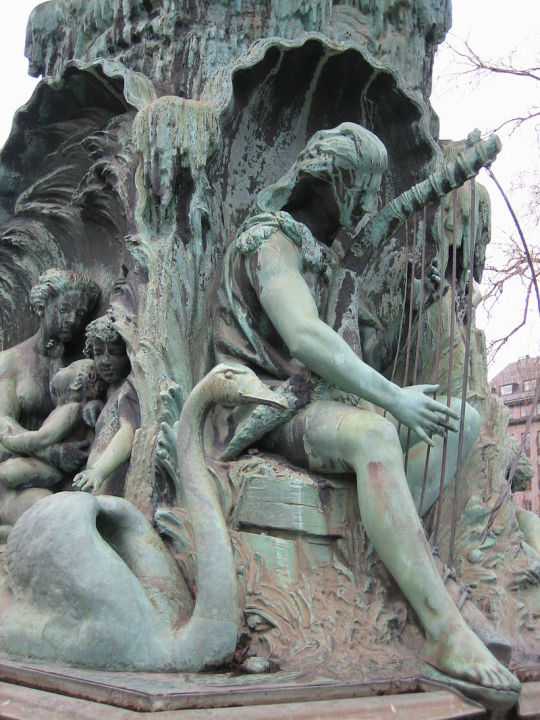
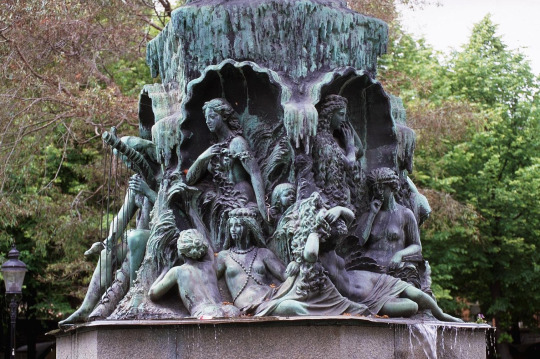

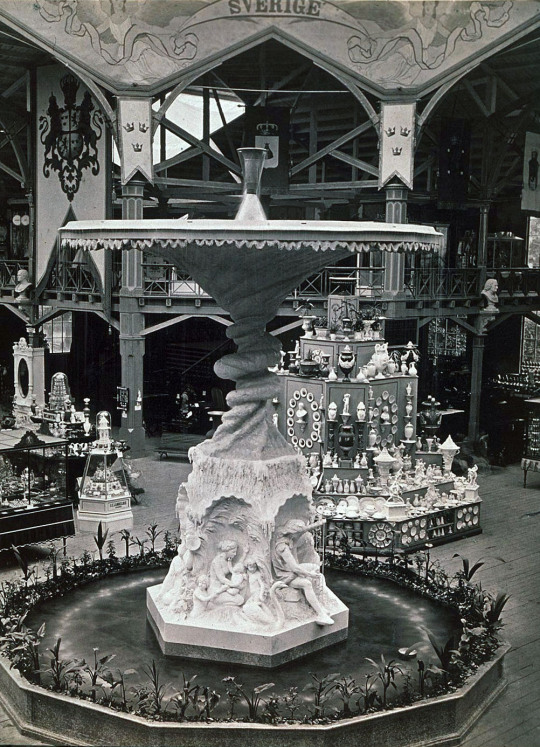

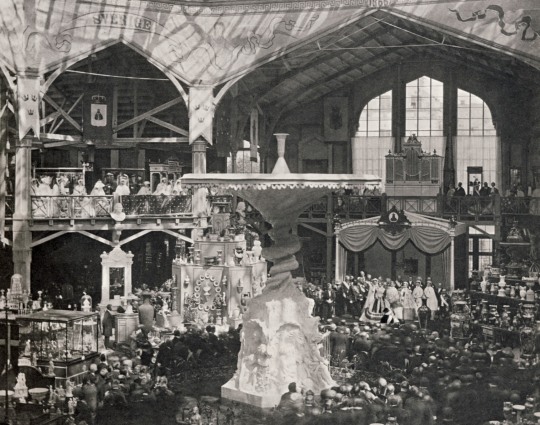

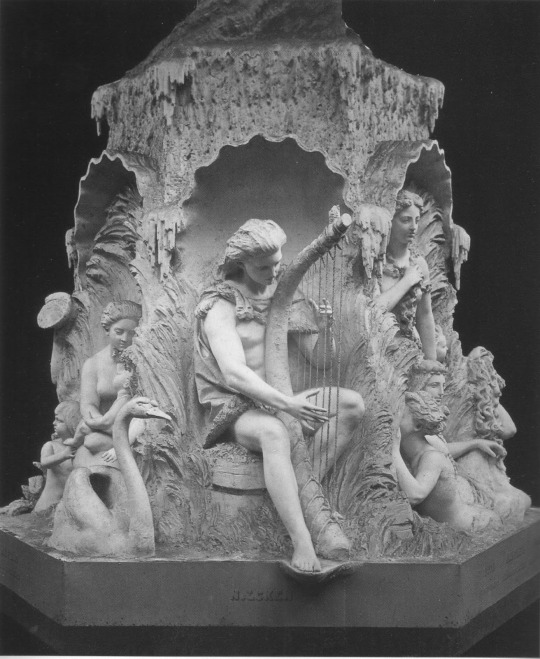
The fountain of Johan Peter Molin 1866-1873
"How should one periphrase the sea? Thus: by calling it Ymir's Blood; Visitor of the Gods; Husband of Rán; Father of Ægir's Daughters, of them who are called Himinglæva, Dúfa, Blódughadda, Hefring, Udr, Hrönn, Bylgja, Bára, Kolga; Land of Rán and of Ægir's Daughters, of Ships and of ships' names, of the Keel, of Beaks, of Planks and Seams, of Fishes, of Ice; Way and Road of Sea-Kings; likewise Encircler of Islands; House of Sands and of Kelp and of Reefs; Land of Fishing-gear, of Sea-Fowls, and of Fair Wind."
--Skáldskaparmál, Section 25
https://paganimagevault.blogspot.com/2019/12/the-fountain-of-johan-peter-molin-1866.html
#aegir#fountain#germanic#norse mythology#european art#sculpture#19th century art#classic art#europe#sweden#pagan#paganism#heathen#swedish#johan peter molin
5 notes
·
View notes
Text
The first things she sees in New Asgard are death, are loss, destruction. Sif has a hard time reconciling the resilience of her people when first what hits her are all the people missing. She can see the rebuilding, but it’s hard to focus on, hard to take to heart.
She slowly asks after friends and family. Loss there, so much. The Warriors Three have been with her near all her life and now just...gone. Then it’s Heimdall, he always seemed so invincible as she grew up, but he too gone. She tries to find her mothers, and there’s an itching in her throat to know whether they survived, surely they must. Right?
She asks and eventually is directed to a home at the end of a lane. She doesn’t know what to expect. “They’re down that way, end on the right” is all she is told. She dreads to wonder: how many?
Three.
Nine reduced to three, but before she knows that Sif stands on their doorstep, pausing to knock, letting out a breath, and knocking three times. She steps back. Waits. It opens, and Bylga is there in front of her, eyes quickly widening. As Sif says says a cautious hello she’s calling inside, “Himinglæva! Kólga! Living room!” she reaches for Sif’s hands and ushers her inside. “Come in, Gods you’re here, you’re really alive,” she says in disbelief.
“I am. I made it back.” Before she knows it she’s guided to a chair and sat down.
“We had hoped you would since you were banished, but we didn’t know how long-”
“What is it?” Kólga’s voice and footsteps come annoyed down the stairs, and as Sif turns her annoyance become a sharp breath in, and faster footsteps. “You returned,” the softness in her voice falls away just as quickly as it came, and Kólga calls much louder, “Himinglæva! Get in here! It’s Sif!”
“What?” A muffled voice calls in return.
“It’s Sif! Sif’s back!” Kólga shouts as she crosses the room and puts an arm around Sif, kisses her hair. “I knew you would be. My strong girl.” She lets Sif go to take a seat on the couch.
A door opens, and Himinglæva steps out, “Sif? All that’s holy...”
“Hello again, I’m so glad to see you, all of you.”
Himiglæva takes her hand and squeezes it before taking a seat as well. “I saw that you were on your way, but it was cloudy to know the date of your arrival. For a long time you were gone from my view. During the disappearing. We had to merely hope.”
“I came as soon as I could, finding this place took a little doing.” Sif explains, “And yes, I faded away like so much of the realms. When I returned I found I had missed so much. Ragnarok...”
Her mothers exchange glances. “The worst possible tragedy. I am glad you were safe from it. I know you would have fought, and so many died that way,” Himinglæva says.
“She’s stronger than them, she would have survived,” Kólga counters. “No one holds it against you dear, but you’ve always been better.”
Sif nods. She holds it against herself. A failure to her people. “Are you three the only...? I know Heimdall did not survive. I imagine Aegir and Rán did?”
“Their preference for holding court on Midgard served them well. They aided the us when we arrived, and keep the waters calm in the surrounding area for us. But...” Bylga pauses and glances to her sisters. “I’m afraid we are all that is left. Ragnarok took many, even some of us. I’m sorry, Sif.”
“It’s alright. I knew it might happen once I heard. I’m so sorry, maybe I could have done something.”
“Fate rarely makes exceptions,” Himinglæva says calmly, she would know after all. “We had many years together, something was going to happen eventually.”
So they talk. Not everything is in agreement, but it rarely is with her mothers. After awhile she is able to smile, and so are they. There’s tea, and later alcohol, there’s a bed for her later still. For the night her heart is a little lighter, calmer. She will wake again to her grief, have to be buoyed by them again over the next days and weeks.
She thinks of her other mothers again and again, killed with Asgard, nothing left, and her heart aches. She repeats their names like prayers. They’ve never been the closest family, but the loss burns deep and bright.
1 note
·
View note
Photo
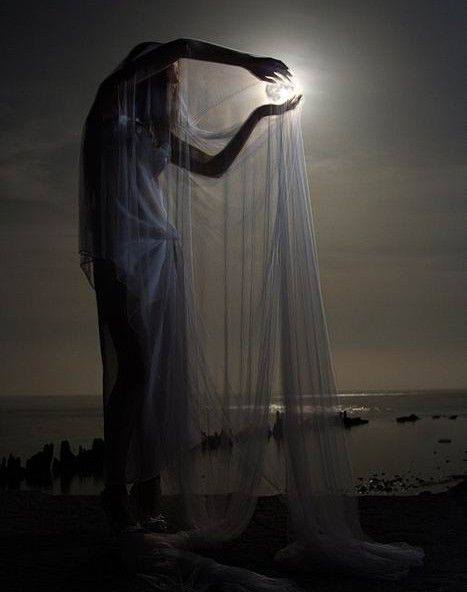
Himinglæva, (That through which the sky can be seen (a reference to the transparency of the water)), is a Norse giantess, a goddess and the personification of an aspect of ocean waves. She is one of the nine daughters of Ægir and Rán, God and the Goddess of the Sea.
3 notes
·
View notes
Text

This print was titled after one of the nine daughters of Rán, a Goddess found in Nordic mythology. Their names all reflected different characteristics of the ocean waves. 'Himinglæva' translates as "through which one can see heaven", relating to the transparency of water.
'Himinglæva' - Signed Limited edition print - 60cm x 75cm - Now with 25% off with discount code: INSIDE25
Link to purchase 👉 http://bit.ly/himingprint
∞
jamesroperart.com
5 notes
·
View notes
Photo
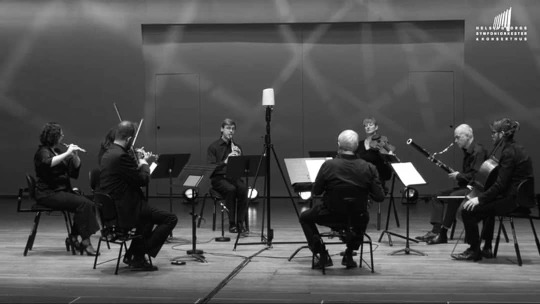
I am very happy today, my new piece "Himinglæva" (meaning "clear sky", or "transparent wave") for 8 instruments has been performed by members of @helsingborgssymfoniorkester and live streamed on the website of @helsingborgskonserthus Many thanks to the wonderful musicians in this great orchestra who gave me this opportunity to work with them! Make sure you check out their video, it will be available until summer! . . . #ErikValdemarSköld #composer #concert #contemporary #newmusic #chambermusic #instrumentalmusic #livemusic #norsemythology #classicalmusicians #classical #classicalmusic (på/i Malmö, Sweden) https://www.instagram.com/p/CLHzUqOBUr5/?igshid=1iuhhepu6gh2z
#erikvaldemarsköld#composer#concert#contemporary#newmusic#chambermusic#instrumentalmusic#livemusic#norsemythology#classicalmusicians#classical#classicalmusic
0 notes
Photo
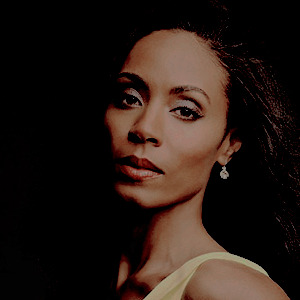

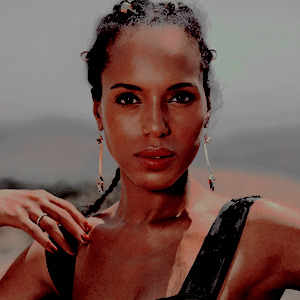






THE DAUGHTERS of Ægir are the NINE DAUGHTERS of Ægir and Rán, a giant and goddess who both represent the sea in Norse mythology. Their names are poetic terms for different characteristics of ocean waves. Himinglæva - That through which one can see the heavens, Dúfa - The Pitching One, Blóðughadda - Bloody-Hair , Hefring - Riser , Uðr - Frothing Wave , Hrönn - Welling Wave, Bylgja - Billow, Dröfn - Foam-Fleck, Kólga - Cool Wave. Also known as the NINE MOTHERS of Heimdall .
5 notes
·
View notes
Photo

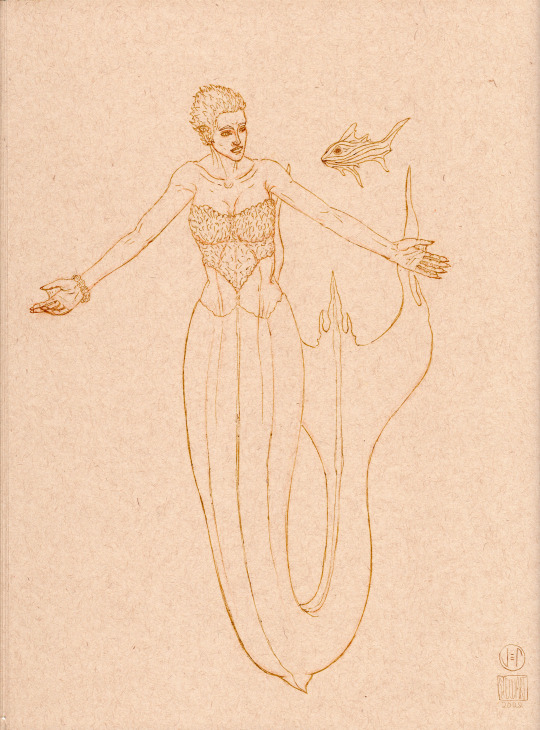
Norsery Rhymes, Northern Mythology from A to Z
Daughters of the Sea
Happy Thorsday in MerMay!
Well here we are another Thor’s Day and another 20 min sketch of a Norse (and Germanic, sometimes Celtic) mythological characters. This week, since it’s in MerMay, I’m cheating a bit going back to the Mermaid Daughters of Aegir and Ran, the Norse gods of the Sea. One of the Nine Waves, the nine daughters of the sea, the Billow Maidens, Blóðughadda, Bylgja, Dröfn (Bara), Hefring (Hevring), Himinglæva, Hrönn, Kólga, Uðr (Unn).
I did a quick colour version yesterday as well.
1 note
·
View note